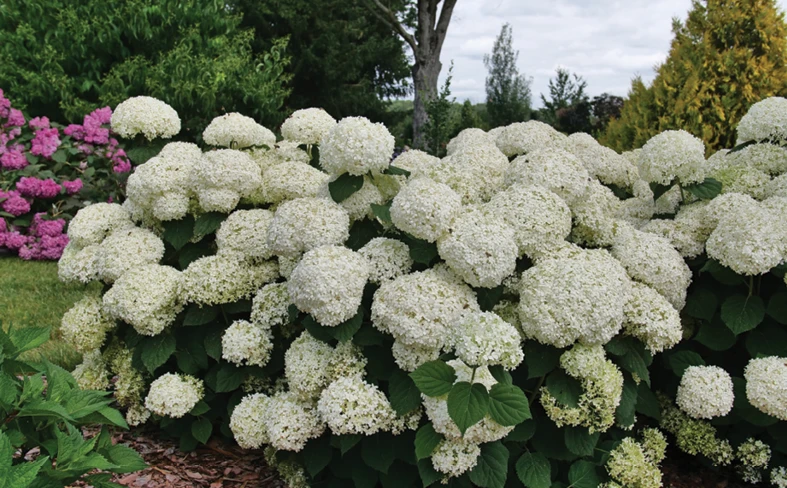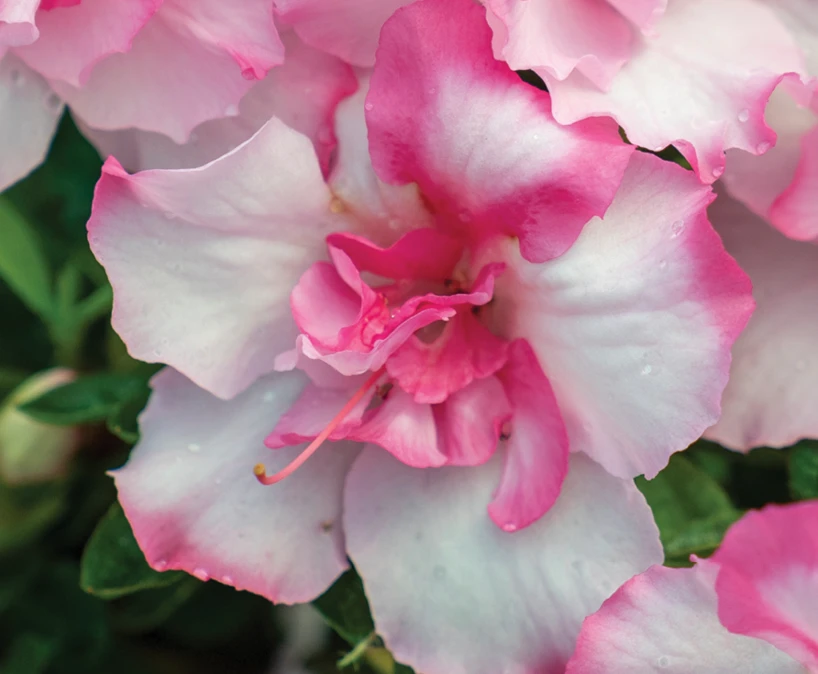 Steve Black founded Raemelton Farm in 2004. His willingness to try automation and new production techniques keeps costs down. Black walks the nursery with Emily, the family dog.Steve Black, founder of Raemelton Farm in Adamstown, Md., is not afraid to ask “why.” His determination to find improved production practices has led him down an interesting path filled with meters, monitors and autonomous vehicles.
Steve Black founded Raemelton Farm in 2004. His willingness to try automation and new production techniques keeps costs down. Black walks the nursery with Emily, the family dog.Steve Black, founder of Raemelton Farm in Adamstown, Md., is not afraid to ask “why.” His determination to find improved production practices has led him down an interesting path filled with meters, monitors and autonomous vehicles.
Black’s approach to try new or underused ideas allows him to implement techniques while his nursery is still relatively small.
“We’re an infant in the industry, and it’s a whole lot easier to adopt new practices when you’re small, rather than when you’re huge,” Black said.
His goal is to find practices and tools that minimize labor expenses and environmental impacts, while maximizing plant growth.
“It makes sense to work on things like that now, so when we’re larger it’s all in place and ready to use,” Black said.
His progressive plans and willingness to try new things will only fuel the nursery’s growth, said Stanton Gill, extension specialist at the University of Maryland.
“He’s a progressive, thinking grower who doesn’t follow the crowd,” Gill said.
Gill has been involved in several experiments at Raemelton Farm. Black credits Gill with helping the nursery avoid common startup mistakes.
“Stanton was the first to conduct pest control trials at the farm and has been a huge resource for me,” Black said. “No other person outside our operation has been so important to our nursery.”
 Irrigation innovation
Irrigation innovation
The farm exclusively uses drip irrigation, which certainly cuts down on water usage. But when Black first began his nursery he wanted to know how much water to apply.
“No one could answer my question. I got a lot of ‘it depends’ or ‘1 inch per acre every week,’ which seemed to be the go-to answer,” he said. “But oaks don’t use the same amount of water as a maple. So I had to keep looking to find the optimum number.”
Black became a participant in a project funded by a USDA grant using real-time soil moisture monitors. The project is led by John Lea-Cox of the University of Maryland’s department of plant science and landscape architecture.
Two blocks of trees are equipped with a 12-node commercial wireless sensor network. The sensors monitor the soil water status at 6 inches, 12 inches and 18 inches within the root zone of six Acer rubrum Red Sunset and six Cornus florida ‘Cherokee Princess’ in real time.
“The sensors are hooked to a radio transmission box, which reports the percentage of available water in the soil every 15 minutes,” Black said. “I can actually see between the two nighttime measurements how much water those trees use during the day.”
Even with drip irrigation, water is sometimes pushed below the root zone.
“If I run the irrigation system so I never see changes in moisture at the 18-inch depth, I know I’m not wasting water,” he said.
This is the second year of a five-year project, so it’s too preliminary to know just how much water he’s saved. But it has provided enough information to adopt a more efficient way to water.
“With these soil moisture monitors, I looked at a four-hour run once a day and a two-hour run in the morning followed by a two-hour run in the afternoon. By breaking it up twice a day, I found it gave us the greatest lateral movement of water,” he said.
The primary objectives of this study are to evaluate the performance of these sensors and the capability of the network to provide real-time data so growers can make more effective day-to-day irrigation decisions.
Perfecting IPM
Raemelton Farm has a comprehensive integrated pest management program in place – something Black adopted from the beginning.
“The only thing we don’t do is releases because we have such a healthy population of naturally-occurring beneficials,” he said.
 When potato leafhopper started attacking some of his stock, he partnered with the University of Maryland for another experiment.
When potato leafhopper started attacking some of his stock, he partnered with the University of Maryland for another experiment.
“The conventional way to fight this pest is to spray a broad-spectrum pesticide three or four times a summer,” he said. “Since this pest gets on a lot of plant material, you’re killing everything with six legs – good and bad bugs.”
Instead, Black tried Flagship in his drip system once in the spring. He treated only the rows that needed it and he got season-long control. “It’s on the Flagship label, but I get the feeling not many growers use it that way,” he said.
To fight off ambrosia beetles, Black found a study at the USDA Agricultural Research Service testing trap trees.
“Instead of blasting a broad-spectrum insecticide, the pests go to the trap trees which are injected with ethyl alcohol,” he said. “We tried it this spring. None of the trap trees got hit with ambrosia beetles, but we don’t have a lot of problems with that pest right now. This is an emerging solution for an emerging pest.”
Solutions don’t always come out of university research. “Look at your IPM program and always evolve it,” he said.
Soil savvy
While the soils at Raemelton Farm are some of the best in the county, Black continues to look for ways to improve soil fertility.
“Our grass aisles have to be mowed, so we’re looking at dwarf grasses and fescue cultivars that only have to be mowed once or twice a year,” he said.
He’s also experimenting with cover crops to attract beneficial insects and improve soil fertility. He’s currently trying crimson clover, forage radish and dwarf buckwheat.
“The forage radish is showing a lot of promise,” he said. “The root system is 3 feet long. It’s a source of slow-release nitrogen, it improves aeration and it chokes out winter weeds.
“It helps with our pre-emergent applications. We don’t have to put one down until May instead of the typical March application,” he said.
For more: www.raemelton.com; www.smart-farms.net.

Explore the June 2010 Issue
Check out more from this issue and find your next story to read.





